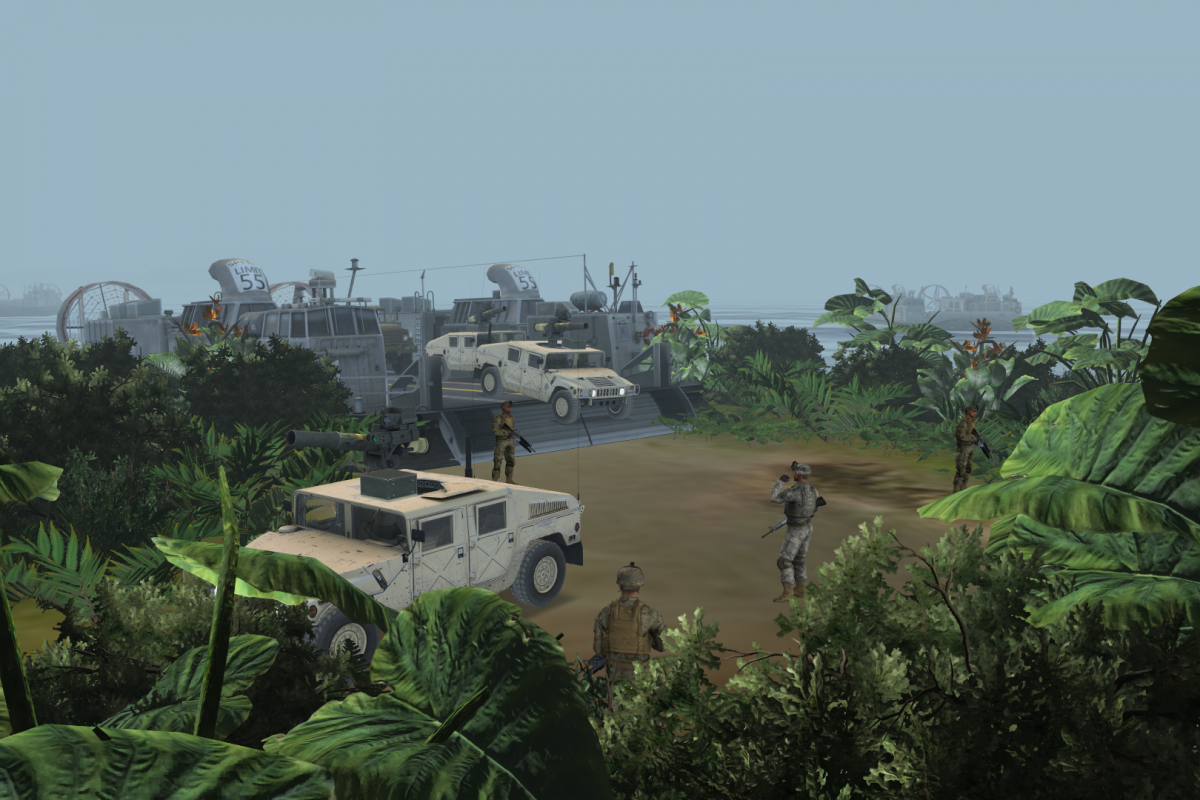Having long surpassed simple wargaming, virtual and augmented reality training solutions bring troops closer to operational realism, while simplifying costs and logistics.
From ground warfare and vehicle training to command centre controls and piloting drones, armed forces need effective, repeatable, and affordable training across all of their branches and disciplines – and they need it now.
Why simulation training is vital in a contemporary context
Warfare has never been as complex, or as multi-domain, as it is in the modern day, with cyber warfare now a prominent – and in some respects primary – battleground.
As a result, the training and preparedness demanded of soldiers is more anticipatory, focused on getting ahead of the curve rather than responding to convention.
Every force command wants its troops to train for the real thing by drilling the real thing – but that may be impractical, unsafe, or even impossible for myriad reasons.
Given the British Army is aspiring for a tenfold increase in capability over the next decade, boosting its efficacy in operations around the globe, there’s no time for delays or setbacks.
Below, we share five compelling reasons for simulation training to address the needs of modern armed forces:
1. Simulation training is cost-effective and saves time
Simulations are arguably at their most cost-effective for those learning to operate a tank, submarine, or heavy weapon.
To train with the real thing, while ideal in theory, demands sourcing a vehicle or weapon itself, then locating a safe area to practice, providing fuel and/or ammunition, and coordinating the logistics of it all.
Conversely, simulation-based training can be conducted in an ordinary classroom, with multiple learners and observers able to participate without constraints and with absolute repeatability.
Command and Staff Training (CAST), used by the British Army and NATO, sees thousands of soldiers train every year in collective exercises.
The British Army’s Collective Training Transformation Programme (CTTP) aims to replace up to 30% of live exercises with simulation training, saving millions of pounds in the process.
2. Simulation training can be done in a safe environment
Simulation-based training allows learners to engage with fundamental skills and perfect them without risk to themselves or their peers.
In this scenario, a shot travelling wide risks no harm to anybody in the real world, while a crashing jet incurs no cost nor damage.
The RAF’s advanced Gladiator programme, brought to life through a global delivery team that includes ST Engineering Antycip, confers such benefits for UK air forces and its allies.
Just as lessons can be learned safely, so too can mistakes be made and learned from.
This type of training provides trainees with a controlled and safe environment in which to practice – for example, in a realistic recreation of an urban environment – and assists with building confidence to perform effectively in real-life scenarios.
3. Simulation training is highly immersive
Defence and military simulation installations are more than simply computers set up on desks.
Utilising virtual reality (VR) and augmented reality (AR), combined with real-world, physical elements, allows for the construction of highly immersive (and effective) environments.
The immersive nature of synthetic training environments (STEs) is key to their usefulness as learning tools.
The more ‘real’ it feels for the user’s mind and their perception, the more chance of that training serving them well when those same skills are needed in the field.
When creating these environments, Antycip grasps the importance of the fine (but essential) details.
High-fidelity displays, accurate geography and terrain, and realistic physics are essential to building accurate worlds that draw in the learner and makes their training analogous to real-world exercises.
4. Simulation training facilitates multi-domain readiness
Simulations can build preparedness for not only a range of terrain types and locations, but also niche and specific scenarios.
Take the roles of unmanned aerial vehicles (UAVs) in modern international warfare, particularly the success boasted by Ukraine’s use of drones.
Successes like these bear two implications for training: learning how to emulate and adapt them, and practising how to defend against others doing the same.
Simulations can be used to virtually stress test air defences against large-scale drone attacks, unearthing scenarios in which they could be overwhelmed or subverted.
Readiness for cyberattacks, and other disruptions such as GPS and radar jamming, can also be drilled repeatedly, ensuring forces are fully prepared for all possibilities.
5. Simulation training allows for measurable progress
Objectively measuring whether your trainees are learning and advancing their capabilities can be challenging, and in some cases, all but impossible.
Simulated exercises are data-driven and measurable, since they’re taking place inside a virtual framework already coded and designed to measure every move and action.
Statistics and decisions made by the users can be tracked, analysed, and compared to highlight trends and make predictions about the efficacy of future exercises.
The performance of the individual can be viewed under sharper focus, and coaching can be personalised according to the strengths and needs of the learner.
The future of simulation in defence training
With defence spending now a central objective of the UK government, and a refreshed plan for warfighting readiness the product of lessons learnt from Ukraine and other conflicts around the globe, simulation has a major role to play in the training needs of the UK and its NATO allies.
Recent shifts in strategy demand simulation-based training today.
Indeed, The EU Strategic Compass calls for digital twin battlegrounds on which Article 5 scenarios can be practiced, and the Joint Command and Staff Trainer (JCAST) is a programme under which preparation for future challenges is being made.
Case study: F-35 Mission Training
ST Engineering Antycip partnered with Nova Systems to realise a Capability Concept Demonstrator, made to investigate novel mission training solutions for RAF pilots.
The simulator, a proof-of-concept before the force committed to major expenditure, is focused on the F-35 – the model of fighter jet recently purchased by the UK to expand the nation’s air fleet.
How ST Engineering Antycip assists with simulation-based training for defence
Antycip is one of Europe’s leading providers of simulation solutions.
We work with a broad range of experienced, specialist suppliers with whom we collaborate to build the optimal installation for any defence project, from prototyping through to full, mission-ready simulators.
Realistic vehicle and ballistics physics, terrain modelling, and computer-generated forces to fill the simulation—we have an answer for everything.
For defence and military simulation solutions, look no further; our decades of experience and hundred-strong collaborative partnerships across the globe place us at the cutting edge of simulation-based training.
To learn more or to make an enquiry, contact us today.




















